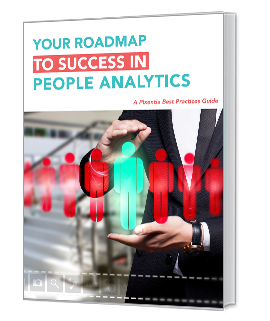
HR analytics, talent analytics, people analytics, and workforce analytics have become a confusing jumble of concepts. They can have different meanings depending on context, but we frequently use them interchangeably.
To make matters worse, the term “analytics” often becomes conflated with reporting and business intelligence. Software vendors package reports and dashboards in their applications and call it analytics. Business intelligence vendors wrap their entire suite of offerings into “analytics,” using it as an all-inclusive term.
Embedded analytics is powering a new hype cycle, with competition driving a rush to bring reporting and analytics directly into business applications, enabling better decision-making. A new model for delivering actionable information to business users is rendering IT-driven, centrally provisioned, highly governed and scalable system-of-record reporting obsolete. The future belongs to self-service data preparation and data discovery, where users can employ plain-language search tools to find the answers they need to seize opportunities at today’s speed of business.[1]
Words matter. They can shine light on a concept or obscure it. When the future of a project or strategic initiative depends on shared understanding, lack of clarity has consequences. We want to spend a few minutes to develop a framework for bringing your team together by promoting clarity of meaning.
The Analyst’s View
When researchers and data professionals refer to analytics they are describing statistical and predictive 
modeling—much different from the reports people use every day to manage everyday business operations. They focus on predictions and connecting between data and business outcomes. Reporting information in dashboards is not analytics, it is operational or management reporting. Predictive analytics is also much different from the simple analysis we use to correlate information from various sources to understand what is happening now or occurred in the past.[2]
Little of the work data teams do is predictive analytics. At the strategic level, few things matter, but they matter a lot. Answering the big questions that determine the direction of the business is worth the investment in sophisticated statistical modeling. Most data work is reporting on processes and events (Figure 1). We don’t mean to say reporting is not important. It is essential, but requires fewer resources.
Marketing Messaging
Human capital management software vendors include “analytics” in their marketing, but few offer true analytics in their reporting functions. Data preparation tools are usually not part of the package. We can expect those things to change quickly. Gartner, Inc’s strategic planning assumptions for analytics point to a radical shift in the way business software vendors deliver data to end users.
According to Gartner, by 2018
- most business users and analysts will have self-service tools for data preparation,
- stand-alone self-service data preparation will expand into full analytical platforms or be integrated into existing platforms, and
- smart, governed, Hadoop-based, search-based and visual-based data discovery will converge into self-service data preparation and natural language generation.[3]
Analytics in HR
To make sense of the way we use terms for analytics in HR, we reviewed the way vendors and practitioners use the terms and applied our experience and understanding to the differences among them. In many contexts, the differences do not matter, but when they do matter, a lack of understanding can lead a project team astray.
- Workforce Analytics focuses on workforce metrics and optimization, applying statistical models to
 worker-related data to optimize human resource management. (Techopedia). In a general sense, it relates to the size and shape of the workforce.
worker-related data to optimize human resource management. (Techopedia). In a general sense, it relates to the size and shape of the workforce. - People Analytics originated with the Google approach to making people management decisions (Sullivan). A radical departure from the subjective approach to managing people decisions, it infers application of the same rigor used in engineering decisions to people decisions.[4]
- Talent Analytics means anything from using data to manage the workforce to planning a single career, depending on the source. Bersin defines it as “the use of measurement and analysis techniques to understand, improve, and optimize the people side of business” and conflates it with big data and people analytics.[5] Merriam-Webster defines “talent” as the natural endowments of a person or a group of individuals. Those attributes are what drive the competitive advantage people bring to an organization.
- Human Resource Analytics is the application of analytics to HR processes to improve employee performance and return on investment (Techopedia). In its strictest sense, it focuses on how well the HR organization provides services, with the ultimate output being performance and productivity.
Use these suggestions as a starting point for creating the lexicon that works for you. Clarification of terms will help your planning and project teams form operational definitions that foster common understanding.
References:
1. Parenteau, Josh. " Critical Capabilities for Business Intelligence and Analytics Platforms." Gartner, Inc. March 10, 2016.
2. Reilly, Peter. "What do we mean by 'HR analytics'?" November 28, 2016.
3. Parenteau, Josh, et.al. "Magic Quadrant for Business Intelligence and Analytics Platforms." February 04, 2016.
Pixentia is a full-service technology company dedicated to helping clients solve business problems, improve the capability of their people, and achieve better results.



